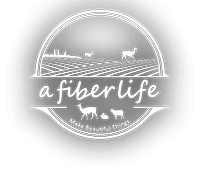
Keep the connection -to a- fiber life!
Be the first to learn shop updates, new essays, events, and special offers!
WHO-We-Are
We are Greg and Lisa, fiber farmers and land stewards committed to making beautiful things and making a beautiful life.
We live with nature. We raise animals for their fiber. We grow and create things. And we write and tell stories about the discoveries we make along the way.
Our life is handcrafted...
from the beginning, with every fiber of our being.
But it hasn’t always been this way.
Have you ever had the impulse to change everything about your life and do something completely different? We did.
In our former life, we couldn’t breathe.
The Sacramento air was killing Greg. His asthma had gotten so bad that he was short of breath all of the time.
Lisa’s business was thriving but had swallowed her up. She was choking for air, too.
While we knew this at some level, we weren’t entirely aware of how bad it had become. In some ways we were like frogs in a pot of water on the stove. We had tolerated and adjusted for decades. We raised three kids. We worked very hard. We made a decent life. And yet we didn’t know what was missing. We didn’t know how hot the water in the pot had become. We didn’t know how little air we had left.
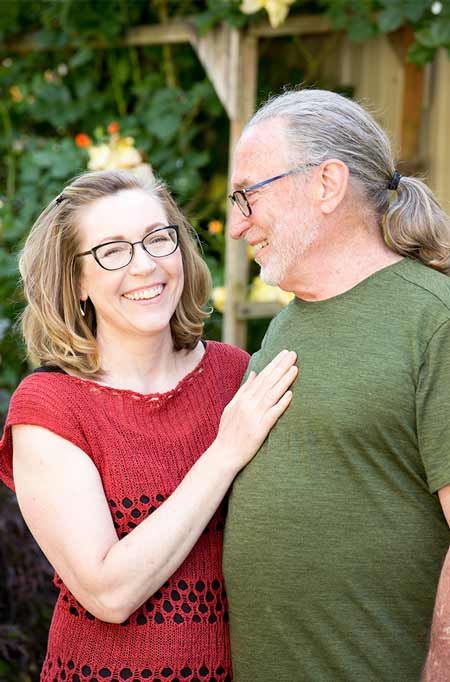
And so we bought a farm!
When we found this place, where the air was clean and life was simpler, Greg suggested we name it Aliento Farm.
-Aliento-
[ah-lyen-to] Spanish
(n.) Breath,
inspiration,
courage.
The word aliento captures so much about what we needed in our lives.
We needed to pause.
We needed to reconnect with our breath.
We needed to create a life with a steady rhythm that honors the seasons and our bodies.
Meet-Our-Guanacos
When we bought our herd of guanaco, we became producers of the 2nd finest fiber in the world.
We jumped into the endeavor with no knowledge and a whole lot of enthusiasm.
Caring for a small herd of guanaco is not for the faint of heart because they are large animals who have not lost their wild nature to domestic breeding. They look similar to their descendants, the llama, but are more deer like in their face and legs. We were naive to their wildness when we acquired them in 2017 from a larger herd that had been a zoo dispersement. Since that time, we’ve learned to handle them a bit and have worked to gain their trust and respect. These animals are central to our lives here on the farm. The twice daily care we give them has challenged us to be more patient, more brave, and more in touch with ourselves and each other.
We welcomed our first baby (called a chulenga) in 2020.
Guanaco care & feeding
(according to our guanacos)
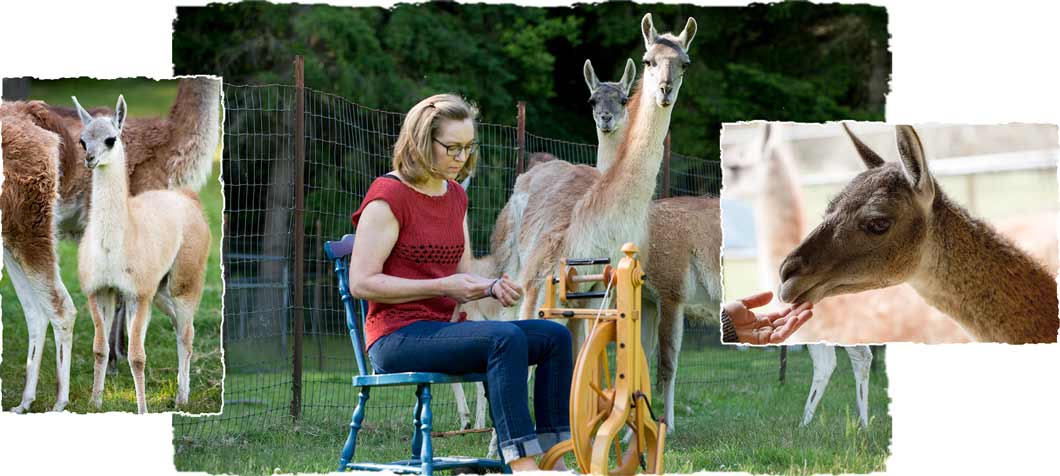
-Guanaco Facts-
What is a guanaco?
- One of 4 New World camelids.
- Llamas were bred from guanacos about 4,000 years ago.
- Importation of guanaco fiber is controlled by an international agreement (signed in 1975). Importation of live animals is forbidden.
- Guanacos come in one color pattern – caramel on top with white underside.
What kind of care do they require?
- Similar care as for an alpaca or llama.
- “Undomesticated” does not mean dangerous.
- It’s easy to establish a co-equal and affectionate relationship with them, although….
- Their natural survival instincts are intact and have not been bred away by 4,000 years of domestication.
- They quickly sound the alarm when there is something new in their environment.
How did guanacos get to Whidbey
- Nearly all guanacos in the U.S. are descendants of a herd brought here in the early 1900’s for zoological purposes.
- The fewer than 1,000 guanacos in the U.S. have all been born here.
Get to know our guanacos
- Angie loves banana peels.
- Kate is exceedingly large (about 350 lbs.) and is the herd leader.
- Coacher likes to sleep in the sun near Greg while pastures are cleaned.
- Kooper has the finest and lightest color fiber. (measuring 14 microns)
- Georgia is the herd protector. Which means she is always the first one to scream the guanaco alarm when a predator (or a stranger) is near.
- Andes is just a tiny, cute baby. We love him so much.
Meet-our other-Animals

Pygora Care & feeding
(according to
our pygoras)

Pygora Goats
Our two pygora goats are the friendliest fiber animals on the farm. They love to cuddle and run around. Milo and Daisy were both bottle fed babies so they are bonded to humans and want very much to be in our company. Their favorite treats are a black oil sunflower seeds and neck scratches.
Pygoras are a breed created for fine fiber. A cross between Angora goats and Pygmy goats. We blend their cashmere down with the other wonderful fibers to create luxurious things you’ll want to feel.
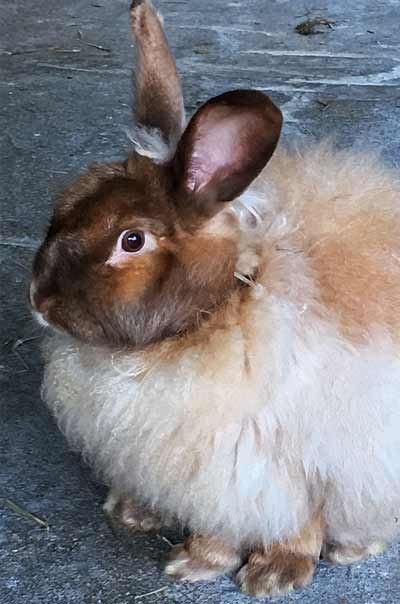
Satin Angora Rabbits
Our satin angoras are mostly sweet and oh so soft. Their fiber has a luster similar to silk and is very warm. We pluck our angoras every 3-4 months and marvel at the abundance of fiber that comes from such small animals. (Fun fact: One tiny bunny produces 3 times the fiber that one of our huge guanacos grows per year!)
Beatrice and Henrietta are a bonded pair. They cuddle and lounge together when they aren’t gorging on dandelion leaves. Jasper is a young handsome buck whose silver grey fiber leaves me speechless. He might be a daddy someday. For now, he is a good little boy and even knows to use the litter box.
We blend the angora fiber and make delicious yarn and garments. Want to see and feel for yourself? Go here.
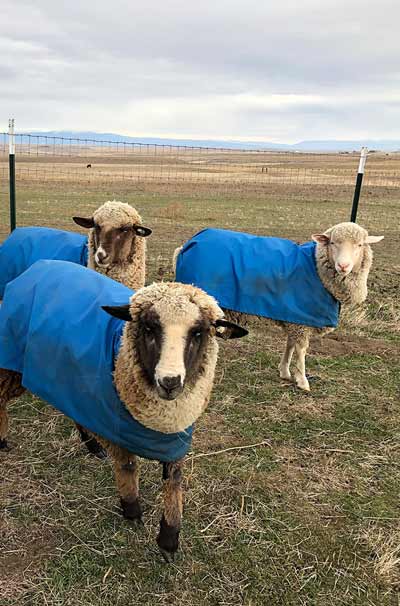

Merino Sheep
When our friend, Jen, found out that we couldn’t raise the fine wool we needed as a base for our downy fiber blends she jumped at the chance to collaborate. Our climate is too wet for the fine breeds, but her farm is dryer and can support the growth of beautiful fine wool. Her girls are sweet and spoiled in their homemade coats. They are special because of the variety of colors that range from traditional white to silver grey to black. These low micron fleeces are the perfect blending base for our exotic fibers.
Listen to the
A Fiber Life
podcast
Hear more discussion about the connection between fiber, our lives and our relationships.
Visit-the-Shop
Our animals work year round to grow the most exquisite fibers because we’re the only commercial source of guanaco fiber in the US. Spinners, knitters, and natural fiber wearers, we can’t wait for you to touch the softness.
